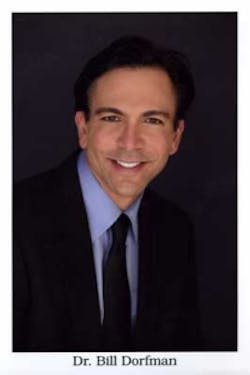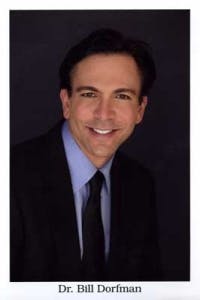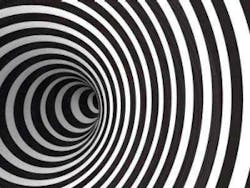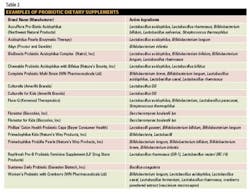A probiotic approach to caries management
By Dawn E. Kasper, RDH professional speaker, published author, corporate consultant
“If you don't like something change it; if you can't change it, change the way you think about it”. How appropriate this quote by Mary Engelbreit is to dental professionals who are seeing a major paradigm shift in dentistry. More than 100 years ago, W.D. Miller, an American educated dentist working in Germany, gave us our first real understanding of the dental caries process by demonstrating it was a bacterially-mediated process.
“If you don't like something change it; if you can't change it, change the way you think about it”. How appropriate this quote by Mary Engelbreit is to dental professionals who are seeing a major paradigm shift in dentistry. More than 100 years ago, W.D. Miller, an American educated dentist working in Germany, gave us our first real understanding of the dental caries process by demonstrating it was a bacterially-mediated process.
Today we know that dental caries is a multifaceted disease process. It has taken considerable time to produce shifts in clinicians’ understanding of the caries process, particularly approaches that can be used to remineralize early lesions in enamel. For the past 150 years, the predominant mode of caries management has been the surgical approach, predating our current understanding and consistent with the original concept that dental caries was a gangrenous process resulting in extraction of carious teeth. Later, just the demineralized portions of the tooth were removed and replaced with an inert restorative material. This mechanical solution for a biological problem prevailed. Today, dental practitioners still teach the removal of diseased tooth structure which suggests we should expect a “cure”. The realization however, is that it has repeatedly been shown not to remove the causative infection.(1)
Louis Pasteur's 'germ theory' paradigm seemed to serve dentistry and medicine well in the era of infectious diseases. Antibiotics revolutionized how the professions treated infectious diseases. Abscessed teeth and periodontal infections could be controlled. Dentistry is now designed to control bacteria, because they are perceived as the root cause of the problem in an infectious disease paradigm. Recent discoveries in periodontal research are now recognizing periodontal destruction as an inflammatory response of the host, rather than due to bacterial infection. It is speculating that while bacteria are always present, they may not necessarily be the cause of the breakdown. Infectious diseases do exist, but most degenerative, lifestyle diseases like periodontal disease and tooth decay are inflammatory, not infectious. The evidence that bacteria are merely casual rather than causal leaves a huge hole in dentistry's infectious disease paradigm. The paradigm that inflammation is the root cause of not only periodontal disease, but dental caries, cardiovascular disease, diabetes, arthritis and many more is rapidly emerging. The words "gingivitis" and "periodontitis" recognize that it is not the infectious bacteria, but the chronic insult of their toxic by-products that are irritating the skin and causing inflammation. Restoring carious lesions, scaling, pocket elimination and straightening teeth all have the same objective to minimize bacteria. Bacteria do not cause dental decay. The real war is not what is happening on the surfaces, but how the host is responding from the inside. Localized oxidative stress caused by acid overwhelms the body's antioxidant defense system and decay is the result of the body's inflammatory response breaking down the tooth's collagen.(2) www.oralhealthjournal.com/issues/story.aspxThere is a paradigm shift in the management of dental caries. Research in cariology is sky-rocketing, bringing out hidden facts of this age-old disease, but education and clinical practice are adopting them at a snail’s pace. In clinical practice dental caries is still being treated symptomatically, just like the common cold. Clinicians have adopted a comfort level from many years of practicing 'restorative' dentistry, but unlike the common cold that does not have a cure, dental caries has abundant options to be cured and eradicated. It is known that biofilm is a thin, invisible, resistant layer of microorganisms that form on and coat various surfaces. The bacteria that exist in biofilm may have significantly different characteristics from free-floating bacteria, as the dense and protected environment of the film allows them to collaborate and interrelate, building an increased resistance to toothpastes and antibiotics. Dental plaque, a complex microbial community, is a perfect example of a biofilm. Scientists estimate that as many as 400 distinct bacterial species may be found in plaque. This yellowish biofilm will build up on teeth and lead to decay if not removed regularly.(3) www.chrisal-probiotics.com/what-are-probiotics/what-is-biofilmComprehensive management of dental caries should involve the management of disease as well as the lesion. There is now an intense focus on preventive strategies and minimal /non-invasive management of incipient lesions. Essentially, all preventive treatment strategies either alter or modify the causative factors in dental caries etiology, such as diet, host, salivary, and microbial factors.(4) www.jcd.org.in/article.aspWith the introduction of probiotics or health-beneficial bacteria in the beginning of the 20th century, dentistry has in recent years moved toward an antibiotic/antimicrobial model of disease management. The term probiotic, “for life”, was first used in 1965 to describe “substances secreted by one micro-organism which stimulate growth of another”, contrasting the term antibiotics.
Today we know probiotics are “live micro-organisms which when administered in adequate amounts, confer a health benefit on the host”. Probiotics have been used to improve gastrointestinal health for quite some time and their popularity has prompted increased interest for their role in promotion of oral health. They can be yeast, bacteria or moulds. Today most probiotic strains are lactobacilli or bifidobacteria used in milk fermentation. The mechanisms by which probiotics exert their effects are largely unknown, but may involve modifying pH, antagonizing pathogens through production of antimicrobial compounds, competing for pathogen binding and receptor sites, stimulating immunomodulatory cells and producing lactase.(5)Since acid production from sugar is detrimental to teeth, care must be taken not to select strains with high fermentation capacity. Most probiotics are in dairy forms containing high calcium, possibly reducing demineralization of teeth. It is possible these act at bio-film to keep pathogens away and occupy a space that might otherwise be occupied by a pathogen. Probiotics should adhere to dental tissues to establish a cariostatic effect and thus should be a part of the bio-film to fight the cariogenic bacteria.(6)Data is still sparse on probiotic action in the oral cavity. More information is needed on the colonization of probiotics in the mouth and their possible effect on and within oral biofilms. Because of the increasing global problem with antimicrobial drug resistance, the concept of probiotic therapy is interesting and pertinent, and merits further research in the fields of oral medicine and dentistry. Preliminary data obtained has been encouraging, but numerous randomized clinical studies will be required to clearly establish the potential of probiotics in prevention of dental caries. Dental health professionals will require a new understanding of the disease process. We now recognize that we are not so much health professionals, but disease symptom therapists. It is up to us to lead the way in the health and wellness paradigm. Time will tell whether we act wisely.References1. Anderson M H, Shi W. “A probiotic approach to caries management” Ped Dent, 2006; 28 (2): 151-153.2. Southward K. “Whole person dentistry” Oral Health J, 2006 May http://www.oralhealthjournal.com/images/story.aspx?aid=1000203890&type=PrintArchives. 3. Chrisal Probiotics. “What is biofilm?” [cited 2011 Jan 30] http://www.chrisal-probiotics.com/what-are-probiotics/what-is-biofilm. 4. Carounanidy U, Sathyanarayanan R. Dental caries: A complete changeover, PART III: Changeover in the treatment decisions and treatments. J Conserv Dent, 2010; 13: 209-17 http://www.jcd.org.in/text.asp?2010/13/4/209/73383.5. Bhushan J, Chachra S. “Probiotics-their role in prevention of dental caries” J Oral Health Com Dent, 2010; 4 (3): 78-82.6. Saraf K, Sashikanth MC, Tulasi P, Sultana N, Chaitanya N. “Probiotics – do they have a role in medicine and dentistry?” J Assoc Physicians India, 2010; 58: Art 5.
Dawn E. Kasper, RDH, professional speaker, published author, corporate consultant. CEO, President with Trusted Success Consulting, hygiene educator with OraPharma




